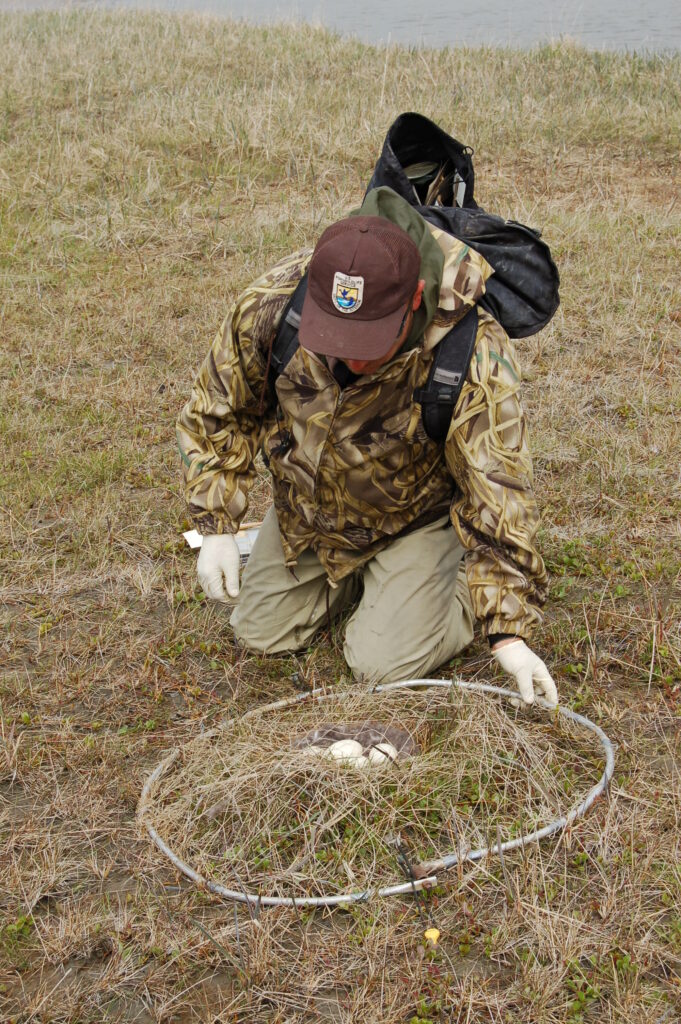
Article by Lalita Panicker, Consulting Editor, Views and Editor, Insight, Hindustan Times, New Delhi
From thousands of sea lions off the coast of Peru to mink farmed for fur in Spain to grizzly bears in Montana and harbour seals in Maine, for months, the avian influenza virus that has been decimating birds across the world has also sickened and killed a menagerie of mammals, raising fears it might evolve to spread more efficiently between these animals, and ultimately between people. www.science.org/content/article/bad-worse-avian-flu-must-change-trigger-human-pandemic?
For that nightmare to unfold, however, the virus, a subtype known as H5N1, would have to undergo a major transformation, changing from a pathogen efficient at infecting cells in the guts of birds and spreading through faeces-contaminated water into one adept at infecting human lung tissue and spreading through the air. So far, that has not happened. None of the few people who have caught the virus currently wiping out birds, called clade 2.3.4.4b, seems to have passed it on to other people.
“This clade … is most of all and more than all previous clades an avian virus,” says virologist Martin Beer of the Friedrich Loeffler Institute. That is why it has spread so far and wide in birds, he says, and why it is so poor at infecting people. Beer and his colleagues in Berlin and Münster, Germany, have been using lung tissue taken from cancer patients undergoing surgeries, for instance, to see whether the virus can efficiently infect the human cells. So far, it cannot.
So exactly how would this virus have to mutate to cause a human pandemic? Scientists can’t fully answer that yet—but they have identified some key steps. Much of what is known comes from controversial experiments more than a decade ago in which researchers coaxed an earlier strain of H5N1 to spread more efficiently between ferrets. That feat prompted restrictions on such “gain of function” experiments, which has hampered research, says Mathilde Richard, a virologist at Erasmus Medical Center, where some of that work was done. Still, researchers have found other ways to examine how avian flu adapts to mammals. For instance, when another avian flu subtype called H10N7 struck seals in Europe in 2014, scientists sequenced the virus at different stages of the outbreak to identify what genetic changes helped it adapt to the mammals.
Virologists now know that for H5N1 to become adept at spreading between mammals, several of its proteins must evolve. One they are watching closely is the polymerase the virus uses to replicate its RNA genome once it invades a cell. To do its job, the enzyme must co-opt a host intracellular protein, and it is currently more tailored to the avian molecule than its mammalian equivalent. Different combinations of mutations in one subunit of the polymerase, PB2, can change the enzyme to work better in mammals. But there’s one known mutation, dubbed E627K, that does so in a single bound by swapping an amino acid at a key position, a glutamate, for a lysine. The mutation’s first recorded appearance was in the virus causing the 1918 flu. “That PB2 was so good that it has stuck in every human influenza virus until the 2009 swine flu pandemic,” says Imperial College London virologist Tom Peacock.
Whatever path the virus hits upon, H5N1 needs an altered PB2 to become a human pathogen. Think of evolving into a pandemic virus as a ladder that H5N1 has to climb, Beer says. “Then this is the first step.”
And with the virus spreading so furiously around the globe, it has more opportunities to hit the right combination than ever before. In the past, H5N1 outbreaks have faded, but this time, the virus is probably here to stay in wild birds in Europe and the Americas, Richard says. “This is the threat that’s going to keep knocking at our door until it will indeed, I assume, cause a pandemic. Because there is no way back.”
////
A lack of funding could delay late-stage trials of the first new vaccine against tuberculosis for more than a century, warned Bill Gates, whose foundation is backing the development of the shot. www.reuters.com/business/healthcare-pharmaceuticals/world-making-huge-mistake-not-funding-new-tb-vaccines-gates-2023-04-04/
The Microsoft co-founder turned philanthropist said there were a raft of promising innovations in the fight against TB, the world’s biggest infectious disease killer, but that more funding was essential. “The failure to fund these things… like we can’t go full speed ahead on
these vaccine trials – that’s a huge mistake,” he told Reuters in an interview last Monday.
The Bill and Melinda Gates Foundation is the largest funder of the battle against TB, he said, and the work on the M72/AS01 vaccine, originally developed by GSK (GSK.L) and the Gates-backed non-profit Aeras, is now being led by the Bill and Melinda Gates Medical Research Institute.
Gates said a plan for phase III trials for the vaccine would likely be announced later this year. But he called on governments and other philanthropists to step up to help fund the trials, as well as other TB innovations.
He estimated that the vaccine trial would cost $700-800m to “prove it out”.
“So even though we’ll be a big funder of that, we also need partners to come in and do that with us,” he said, adding that vaccine development has a high risk of failure so needs real commitment from funders.
TB, a bacterial disease that mostly affects the lungs, is preventable and treatable, but 10 million people still catch it annually, and 1.6 million people died from TB in 2021, almost entirely in low and middle-income countries. It has long been the world’s deadliest infectious disease, although it was briefly overtaken by COVID-19.
Tools to fight TB, like the Bacillus Calmette-Guerin (BCG) vaccine, are imperfect, but there is “hopeful” innovation in vaccines like M72,
simpler treatment regimens, and easier to deploy diagnostic tests, said Gates.
There is also a United Nations high level meeting on TB due in September, but Gates said he feared it may not happen due to other global priorities.
“Even if they do it, it won’t get much visibility,” he said. “It’s always challenging when there’s so many budget priorities. But the world has made a huge mistake not investing more in TB.”
/////
www.science.org/content/article/first-mock-monkey-embryos-may-shine-light-pregnancy-milestones?
To probe the mysterious early stages of development, researchers have concocted a variety of embryo stand-ins from mouse or human stem cells. Now, scientists in China have created the first monkey versions. These pseudoembryos should more closely reflect human development than their mouse equivalents. And unlike human embryo mimics, they can be inserted into females to help scientists better understand the beginnings of pregnancy—and why it often fails.
“The findings are a milestone in the field of stem cell–derived embryo models,” says stem cell biologist Alejandro De Los Angeles of the University of Oxford, who wasn’t connected to the study.
Starting with stem cells obtained from embryos or from adult cells transformed into an embryonic-like state, several groups of researchers have grown structures that resemble the blastocyst, the ball of cells that in humans takes shape about 5 days after fertilization
and implants in the uterus. Termed blastoids, these imitation embryos can survive for several days in culture and develop many features of the real things. Scientists have even inserted mouse blastoids into mother rodents and shown that they induce some of the changes of pregnancy, although they don’t continue to develop. But mouse blastoids can only reveal so much about human development, and it would be unethical to implant human blastoids into people.
Monkey blastoids promise to be better models, but the right recipe for culturing them proved elusive. Now, Zhen Liu of the Chinese Academy of Sciences and colleagues have generated blastoids from the embryonic stem cells of cynomolgus monkeys, they report today in Cell Stem Cell. The researchers raised the cells in 3D cultures and coaxed them to divide and specialize with two kinds of media. In culture, the blastoids could survive about 18 days. They developed further than any previous blastoids, undergoing gastrulation, the cellular reorganization that sets up the three basic layers of the embryo. They also contained many of the same types of cells genuine monkey blastocysts do and showed similar patterns of gene activity, suggesting they were faithful replicas.
In previous blastoids, certain types of “founder” cells that give rise to key embryonic structures were scarce, notes developmental biologist Jennifer Nichols of the University of Edinburgh. But the new culture system produced a better balance of these cells, suggesting it might benefit other labs trying to nurture blastoids, she says. A next step, De
Los Angeles says, is to investigate ways to prolong the development of the monkey blastoids.
The researchers also inserted 7-day-old blastoids into eight mother monkeys. In three of them, hormones that signal pregnancy appeared in the blood. These three monkeys also sprouted gestational sacs, telltale structures in the uterus that indicate pregnancy. Those findings suggest that monkey blastoids can implant into the uterus and emulate aspects of pregnancy.
They did not continue to develop inside the surrogate mothers, however, suggesting they are not perfect copies. To Nichols, “It’s reassuring that they didn’t develop further.” She thinks that failure should discourage disreputable individuals from trying to pitch human blastoids as a fertility treatment.
“This is a beautiful study,” says Nicolas Rivron, a stem cell biologist at the Austrian Academy of Sciences’s Institute of Molecular Biotechnology whose team engineered the first mouse blastoids in 2018. Creating simulated embryos for more species, he says, will help scientists learn more about early development and what’s necessary for successful pregnancy.
In particular, Rivron hopes the monkey blastoids can provide insights into why implantation often fails in humans. “Implantation is the bottleneck of human pregnancy,” he says.


